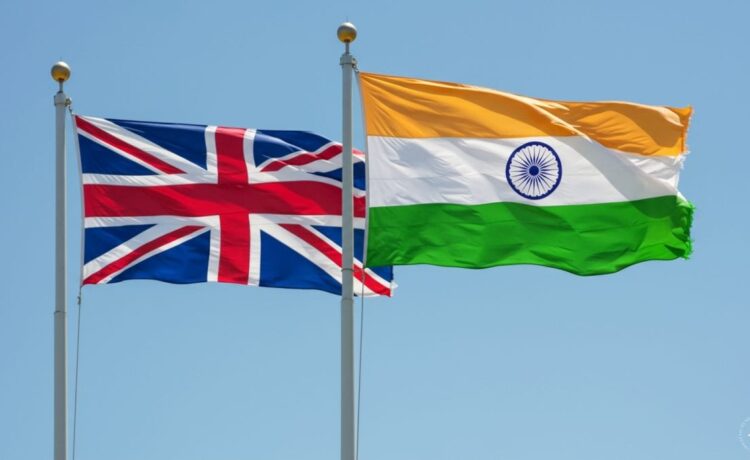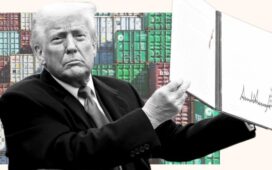India and the United Kingdom have reached a Free Trade Agreement.
The announcement was made on social media by Prime Minister Narendra Modi.
Modi, who described the deal as a ‘historic milestone’, said he was looking forward to meeting UK counterpart Keir Starmer soon in India.
“Delighted to speak with my friend PM @Keir_Starmer. In a historic milestone, India and the UK have successfully concluded an ambitious and mutually beneficial Free Trade Agreement, along with a Double Contribution Convention,” Modi wrote on X.
“These landmark agreements will further deepen our Comprehensive Strategic Partnership, and catalyse trade, investment, growth, job creation, and innovation in both our economies. I look forward to welcoming PM Starmer to India soon,” Modi added.
The development comes after Commerce and Industry Minister Piyush Goyal met Secretary of State for Trade and Business Jonathan Reynolds twice within a week.
Goyal previously met Reynolds and Chancellor of Exchequer Rachel Reeves on April 28 and April 29.
The deal gains significance in the backdrop of US President Donald Trump imposing tariffs on hundreds of nations including several important trading partners.
India is currently trying to negotiate a Free Trade Agreement with the US.
But what is a Free Trade Agreement? What do we know about this FTA? And what about the Double Contribution Convention?
Let’s take a closer look:
What is a Free Trade Agreement?
A Free Trade Agreement is simply a deal between two or more nations on the goods traded between them.
The idea behind it is to do away with or decrease customs duties on the overwhelming majority (90 to 95 per cent) of goods traded between them.
An FTA also massively reduces non-trade barriers on a significant number of imports from partner nations.
It also relaxes norms to promote services exports and bilateral investments.
There are currently at least 350 FTAs in force across the world.
Most nations have signed at least one or more FTA.
FTAs can also be called Preferential Trade Agreements (PTA) or Regional Trade Agreements (RTA) or Bilateral Trade Agreements (BTA).
The WTO uses the abbreviation RTA to represent all types of such economic engagements.
If two or more countries agree to reduce or eliminate duties on a specified number of goods, it is termed a preferential trade agreement (PTA) or Early Harvest Scheme (India-Thailand).
Certain agreements are also named CECA (Comprehensive Economic Cooperation Agreement – India-Singapore) or CEPA (Comprehensive Economic Partnership Agreement – India-Korea) or BTIA (Bilateral Trade and Investment Agreement – India-EU) or TEPA (Trade and Economic Partnership Agreement).
FTAs have a number of benefits including
-
Zero-duty entry into partner country markets helps in the diversification and expansion of export markets
-
Level-playing field vis-a-vis competitors who may have already entered FTAs with partner countries.
-
FTAs enable preferential treatment in the partner country market over non-FTA member country competitors
-
Such pacts attract foreign investment to stimulate domestic manufacturing.
-
They allow access to raw materials, intermediate products and capital goods for value-added manufacturing
-
Help achieve long-term efficiency and consumer welfare goals
What do we know about this FTA?
This is India’s 16th Free Trade Agreement.
Under this agreement, 99 per cent of Indian exports to the UK will benefit from zero duty.
This includes labour-intensive sectors such as textiles, marine products, leather, footwear, sports goods and toys, gems and jewellery, and other important sectors such as engineering goods, auto parts and engines, and organic chemicals.
The deal will offer a massive boost to trade in services, such as IT/ITeS, financial services, professional services, other business services and educational services.
It eases mobility for professionals such as contractual service suppliers, businessmen, investors, intra-corporate transferees, their partners and dependent children with the right to work, and independent professionals such as yoga instructors, musicians and chefs.
GTRI Founder Ajay Srivastava has said India will be gain from reduced duties for Indian exports valued at $6.1 billion, such as textiles, apparel (shirts, trousers, women’s dresses, bed linen), footwear, carpets, cars, marine products, grapes, and mangoes.
These products face relatively low to moderate tariffs in the UK.
Abhishek Jain, Indirect Tax Head & Partner, KPMG, said, “The India-UK FTA is a strong push for business growth. This mostly would make it easier for Indian companies to access the UK market, attract investments, and strengthen trade ties. The long-term impact is expected to be seen in increased opportunities, jobs, and deeper collaboration across industries”
India will cut customs duties on a number of UK products including whisky, medical devices, machinery and lamb.
Whisky and gin tariffs will be cut by half – from 150 per cent to 75 per cent.
By year 10 of the deal, the tariffs will be at just 40 per cent.
India will also reduce automotive tariffs – currently at over 100 per cent – to 10 per cent.
Tariffs will also be lowered on cosmetics, aerospace, lamb, medical devices, salmon, electrical machinery, soft drinks, chocolate and biscuits.
Bilateral trade between India and the UK increased to $21.34 billion in the 2024-2025 financial year compared to $20.36 billion in the 2023-2024 financial year.
The UK has said it expects the FTA to boost bilateral trade by $34 billion per year from 2040.
As per Business Standard, the FTA is expected to double or even triple bilateral trade over the next decade.
As per Financial Express, the UK is India’s fourth largest export market.
India is the UK’s 11th largest trading partner.
Shipments to the UK grew to $14.5 billion in 2024-2025 – a 12 per cent increase from 2023-2024.
The UK has called the deal its “biggest and most economically significant” bilateral trade agreement since it left the European Union in 2020.
As per GTRI, India’s merchandise imports from the UK were $8.4 billion in FY24.
Goods from India to the UK have an average import duty of 4.2 per cent, as per CNBC.
Meanwhile, the simple average tariff in India on goods imported from the UK is 14.6 per cent.
India previously signed FTAs with Sri Lanka, Bhutan, Thailand, Singapore, Malaysia, Korea, Japan, Australia, UAE, Mauritius, the 10-nation bloc ASEAN (Association of Southeast Asian Nations), and four European nations’ bloc EFTA (Iceland, Liechtenstein, Norway, and Switzerland).
India is also negotiating FTAs with the US, Oman, the European Union (EU), Peru, and Israel.
Talks with Canada for an FTA have been put on hold due to political tensions between the nations.
What about the Double Contribution Convention Agreement?
As per Itaxa.it, a double contribution agreement is an international pact between nations.
It can also be called social security totalisation agreement or bilateral social security treaty.
Under such an agreement, the countries specify which nation’s social security regime applies.
This offers both businesses and staff protection and allows them to save on costs.
It also contributes to the free movement of labour.
Under the Double Contribution Convention Agreement, Indian workers who are in the UK temporarily will be essentially be exempt from paying into the UK’s social security for a period of three years.
It is also known as the social security pact.
The idea behind it is to stop employers and employees from the burden of contributing to social security in multiple countries.
It allows employees to benefit from keeping their pension, healthcare and other benefits in their home nation.
If an employee is working in another country from two to five years, they may be exempt from contributing to social security in the foreign jurisdiction, as per Itaxa.it.
Such agreements also work alongside double taxation treaties – which reduces the chances of employees facing income tax demands in multiple jurisdictions.
India has previously reached Social Security Agreements (SSAs) with Belgium, Germany, Switzerland, France, Denmark, Korea, and the Netherlands.
Indians working in the above countries are therefore not required to contribute towards social security schemes.
They and their employers can continue with social security schemes run by the Employees’ Provident Fund Organisation (EPFO) in India while working abroad.
Indian businesses have long since complained about the additional costs of bringing in skilled Indian professionals on a short-term basis.
The compulsory National Insurance (NI) contributions of skilled Indian professionals in the UK on temporary visas remain an additional cost burden of about Rs 56,000 per year.
This is over and above all other taxes and health surcharge paid towards the National Health Service (NHS), as per 2021 data.
Goyal had said the two countries were actively negotiating at three different fronts – free trade agreement (FTA), bilateral investment treaty (BIT), and a Double Contribution Convention Agreement.
India and the UK had launched FTA talks under the Boris Johnson regime on January 13, 2022.
Since then, 14 rounds of negotiations had taken place.
The talks were suspended in May 2024 after both countries had to go in for elections.
After the
Starmer government came to power in the UK, Reynolds in March visited New Delhi to begin discussing the deal again.
There are 26 chapters in the agreement, which include goods, services, investments, and intellectual property rights.
With inputs from agencies





